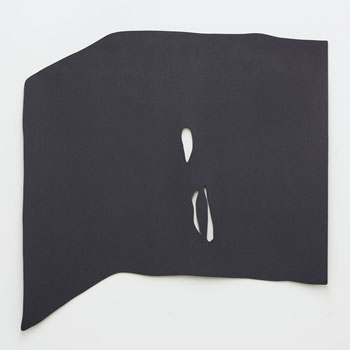
This evening, Galerie Max Hetzler in Berlin opened the second installment of Always There, a group exhibition featuring work by Art:21 Season 3 artist Arturo Herrera. Herrera’s particular interest in the color gray, which he describes as a “problematic color” devoid of personality, provides the premise for the exhibition.
Featured in the first part of this two-part exhibition were Haluk Akak√ße, G√ºnther F√∂rg, Mark Grotjahn, Sarah Morris, Frank Nitsche, Yves Oppenheim, Anselm Reyle and Kelley Walker. Always There Part 2 presents works by Andre Butzer, Albert Oehlen, Richard Phillips, Michael Raedecker, Kay Rosen, and Christopher Wool. Herrera asked each of these artists to create a painterly work specifically responding to and employing the color gray (an appropriate motif for a Berlin-based exhibition considering the city’s perpetually overcast skies), in order to “analyze, define and deconstruct this non-color,” according to the press release.
The neutrality and ambiguity typically associated with what Odilon Redon termed “the quintessence of color,” as noted in the exhibition catalogue, are explored and manipulated by each artist’s individual approach to Herrera’s assignment. Herrera himself has long been engaged with “perfect shades of gray,” using water to manipulate black and white photographs of his drawings in order to create chance imperfections and subtle tonal variations that span the color’s gradient spectrum.
Photography is notably absent from Always There. Instead, Herrera limited the show to painting, although his own exhibited piece functions as both painting and sculpture. A single abstract shape made from felt, Catch (2008) recalls Herrera’s history of collage in a fitting representation of the artist’s celebrated formal tendencies. Similarly, Christopher Wool’s hectic brush strokes, Richard Phillip’s sexualized subject matter, Kay Rosen’s text (“Sky Fog Sea”) and Michael Raedecker’s delicate embroidery all infuse this seemingly mundane color with decisive individuality, exposing vivid personality despite their palette’s “neutral” predisposition.
The exhibitions are accompanied by a fully-illustrated catalogue that includes an essay by art historian Gudrun Inboden. Always There Part 2 will be on view until April 26th. View more images and read more about the exhibition here.



